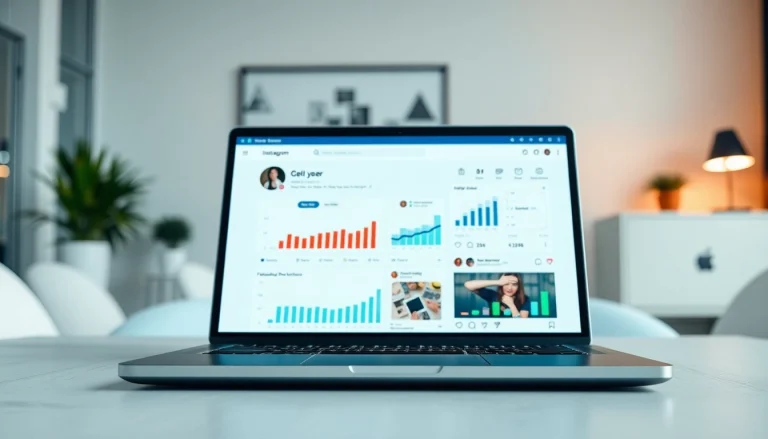Understanding the PMP Application Process
The Project Management Professional (PMP) certification is a globally recognized credential administered by the Project Management Institute (PMI). Obtaining this certification can greatly enhance your career prospects and validate your skills as a project manager. However, before you can take the PMP exam, you must navigate the application process. This guide is designed to offer comprehensive PMP Application Help to streamline your journey towards certification.
What is the PMP Application?
The PMP application is an official document that aspiring candidates must fill out to demonstrate their eligibility to sit for the PMP exam. It requires detailed information about your project management experience, education, and training. The application process can be daunting, especially if you’re unfamiliar with the required documentation and considerations. Understanding the components of the application is crucial for success.
Eligibility Criteria for the PMP Exam
To be eligible for the PMP certification, PMI outlines specific criteria that candidates must meet. Here’s a brief overview:
- Educational Background: Candidates must hold a secondary degree (high school diploma, associate’s degree, or global equivalent) with at least 5 years of project management experience or a four-year degree with 3 years of project management experience.
- Project Management Experience: The experience must include leading and directing projects consistent with the project management framework.
- Project Management Education: Candidates need 35 hours of project management education, which can be acquired through formal courses or training.
It’s essential to carefully document your experience and education to fulfill these requirements and avoid any potential pitfalls during the application review process.
Benefits of a Well-Prepared Application
Preparing a thorough and well-structured application yields several benefits:
- Faster Approval: A complete application with all necessary documentation is more likely to receive prompt approval from PMI.
- Reduced Stress: Knowing that you have met all requirements and provided accurate information can significantly lower anxiety levels as you prepare for the certification exam.
- Increased Confidence: A well-prepared application not only boosts your chances of approval; it also builds your confidence for the exam itself, as you gather your documentation and reflect on your project management experiences.
PMP Application Help: Key Components
Documenting Your Project Management Experience
When applying for the PMP certification, one of the most critical components is accurately documenting your project management experience. Here are key points to consider:
- Projects Overview: Detail your role in each project, emphasizing your leadership and management responsibilities. It’s beneficial to showcase diversity in your experience by including projects of varying scales and complexities.
- Timeframe: Clearly indicate the start and end dates of projects to demonstrate the accumulation of experience over the required period.
- Project Management Processes: Articulate how you have engaged with the five process groups: initiating, planning, executing, monitoring and controlling, and closing. Use specific examples showcasing your contributions to these phases.
- Quantifiable Results: Whenever possible, quantify your achievements to strengthen your case. Use metrics such as budget adherence, project timelines, and stakeholder satisfaction ratings to illustrate your impact.
Education and Training Requirements
Education is another pillar of the PMP application process. Candidates must have documented evidence of at least 35 hours of project management education. Here are some tips for showcasing your educational credentials:
- Include All Relevant Training: List any training courses, workshops, or seminars you’ve attended that focus on project management. This can also include online courses from accredited providers.
- Certificates and Awards: If you’ve received any certificates or awards related to project management, include these as additional proof of your education.
- Align With PMI Resources: Familiarize yourself with PMI’s suggested resources for project management education, which can enhance your knowledge and might also contribute to your 35 hours of education requirement.
Common Mistakes to Avoid
As you prepare your PMP application, it’s crucial to be aware of common mistakes that could hinder your approval:
- Incomplete Applications: Ensure all sections of the application are filled out completely. An incomplete application is a common reason for rejection.
- Vague Descriptions: Avoid vague language when describing your project roles and responsibilities. Be specific and use clear examples to illustrate your expertise.
- Failure to Update Your Information: Make sure that all personal information, including contact details and experience, is current and accurate.
- Ignoring the PMI Talent Triangle: The PMI Talent Triangle emphasizes the importance of continuing education, leadership, and strategic skills. If your application indicates a lack of investment in these areas, it may raise concern.
Step-by-Step Guide to Completing Your Application
Gathering Necessary Documentation
Before filling out your application, it is wise to gather all pertinent documentation. This will streamline the process and ensure you don’t miss any critical components. Suggested documents include:
- Project Descriptions: Document detailed descriptions of your projects as previously discussed.
- Educational Certificates: Keep copies of your diplomas and certificates from any relevant courses.
- PMI Membership: If you’re a member of PMI, include your membership details as it may offer you additional credibility.
Filling Out the Application Form
The application form must be completed online through the PMI website. Here’s how to approach the form systematically:
- Create a PMI Account: If you haven’t already, create an account on the PMI website.
- Provide Personal Information: Fill in your personal details, including name, address, and contact information. Ensure the accuracy of this information.
- Input Project Management Experience: Carefully input each project’s details following the documentation guidance provided earlier.
- Detail Education and Training: Enter all required educational information, ensuring you meet the 35-hour education requirement.
- Review Before Submission: Double-check your application for accuracy and completeness before submitting. It’s helpful to have a colleague review it as well.
Reviewing Your Application Before Submission
Once your application is filled out, take a moment to conduct a thorough review. This ensures that all sections are complete, accurate, and formatted correctly:
- Check for Errors: Look for typographical errors, incorrect dates, and other inconsistencies.
- Verify Quantities: Ensure that any metrics or achievements you’ve documented are accurate and presented logically.
- Seek Feedback: If possible, seek feedback from someone familiar with the PMP process, as they may provide invaluable insights.
Tips for a Successful PMP Application
Expert Advice on Submitting Your Application
Numerous experts offer advice when it comes to submitting a successful application. Here are some top tips:
- Start Early: Give yourself plenty of time to compile your application and prepare for submission. A rushed application can lead to mistakes.
- Be Concise yet Detailed: Strike a balance between providing sufficient detail and keeping your descriptions concise.
- Follow Guidelines: Adhere strictly to PMI guidelines regarding formatting and content to avoid unnecessary complications.
Using Online Resources for Guidance
The internet is a treasure trove of resources to aid in your PMP application journey. Consider the following types of resources:
- Webinars and Online Workshops: Many organizations offer free or low-cost webinars that provide insights on completing PMP applications.
- Discussion Forums: Engaging in forums with other PMP candidates can yield helpful tips and shared experiences.
- PMP Application Sample Forms: Learning from examples can significantly enhance your understanding of what a strong application includes.
How to Handle Rejections and Resubmissions
Facing rejection can be disheartening, but it’s essential to approach resubmission strategically. Here are some steps to follow if your application is rejected:
- Understand the Reasons for Rejection: PMI usually provides feedback on why an application was not approved. Carefully review their comments to identify areas for improvement.
- Revise Accordingly: Make the necessary changes based on feedback and ensure your application meets all outlined requirements.
- Seek Professional Help: Consider enlisting PMP application assistance services that specialize in reviewing and advising applications.
Maximizing Your Chances of Approval
Networking with Other PMP Candidates
Networking with peers in the project management community can be invaluable when preparing your application. Here’s how to effectively reach out:
- Join PMP Study Groups: Engaging in study groups can create opportunities for sharing resources and tips.
- Social Media Engagement: Participate in online communities or social media groups dedicated to project management.
- Attend PMI Events: Events organized by PMI often provide networking opportunities, allowing you to connect with other candidates.
Continuous Learning and Development
Project management is an evolving field, and staying updated is key. Consider these continuous learning options:
- Advanced Project Management Courses: Enroll in courses that deepen your knowledge and can be credited towards your ongoing education.
- Certifications: Consider obtaining additional certifications, as these can bolster your application.
- Stay Current: Keep abreast of trends and changes in project management practices and tools.
Feedback and Improvement Strategies
Feedback is crucial for personal and professional growth. Here’s how to implement an effective feedback system:
- Request Feedback After Projects: Always seek feedback after completing a project, as this can help you reflect on areas of strength and those needing improvement.
- Peer Reviews: Engage in peer reviews where colleagues can offer constructive criticism on project management approaches and tactics.
- Document Learning Experiences: Keep a record of lessons learned from your projects to reference in future applications.








